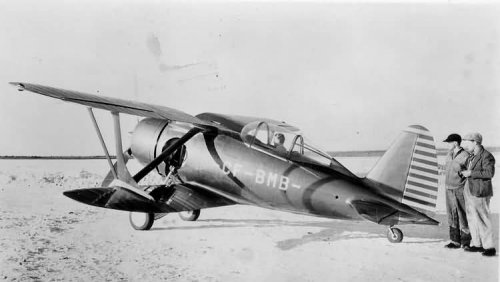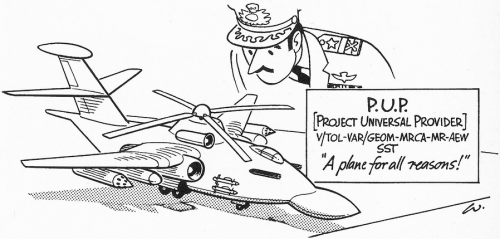Re: Designing a specification for the RCAF, 2010 (Canadian alternatives to the J
Whoa... Is this not "Alternative history and future speculations" par excellance? Why should the fact that we're mapping out possible speculations lead the topic to be moved? Is it the fact that a single illustration happens to bear a non-existent designation, instead of the words "speculative design"? I would like an explanation (for understanding at least).
But until then, I'll have a beer.
Apophenia said:
Okay, ... so that's suited to Canadian operations, twin-engined, cargo-capacity, low-cost and fuel efficient, right? Not sure about the supersonic dash bit (or resurrecting the RCAF) ... ;D
Very excellent! It is almost exactly as I imagined for one of the options (except side-by-side instead of glass cockpit). As a sub-sonic design it might have trouble getting into an intercept position on the Russian patrol aircarft. I've been preparing my own object for the "design competition". It further sacrifices speed for flexibility.
The illustration is dependent on spare time (and I'm certain will be much worse), but I'll give a written description:
The design could have most servicing conducted centrally, but have stations on smaller airfields to allow faster response and expend less fuel to reach patrol areas. Speeds of at least 400kph and a range of 3500km with 1500kg of cargo are projected - although the design may be enlarged with more powerful engines in order to increase cruise speed and take-off performance (eg. 700kph). It is somewhat similar to the IA-58 Pucara and the OV-10 Bronco, but much larger (currently 9,000kg loaded weight). The design looks like a goose.
Basic characteristics:
- A high performance twin engined turboprop
- A modular design using the rear fuselage for quick substitution pods to fill different roles.
- A narrow forward fuselage with a stepped cockpit, similar to the FMA Pucará or Embraer Tucano, for maximising field of view for a pilot and co-pilot/observer.
- Special crush space under the nose (with possibility to use this location for an endemic optical sensor). Flame retardant around the main fuel tanks.
- Rough field landing gear, with a wide spacing to prevent debris striking optics.
Standard rear-fuselage pods:
- A slim/transfer pod (higher aerodynamic efficiency)
- A special high-volume emergency evac with room for one stretcher and an attendant (width of 1.5 metres, height 1.2).
- A pod with the ability to parachute a large automated covered life-raft (with protected engine to avoid catching on debris/people, nets to aid climbing in and heaters/medical equipment).
- Multisensor Patrol/SAR pod (including locations for swapping in LLTV and IR sensors).
- Other parachute payloads or mapping/sensor pods are possible.
- Pods may contain auxiliary fuel tanks for trim
The aircraft is suitable for low-intensity environments with visual/IR threats (not radar equipped air-defenses). The design could be used for border patrol duties, as well as a counter-insurrgency/escort aircraft and a force amplifer to protect peace-keeping operations.
Military/Expeditionary version:
- The cockpit has room for installation of 0-0 ejection seats.
- Main systems run through tracts which can be armoured (14.5-23mm) by replacing panels in the normal version.
- All military pods contain an optional rearward facing optical sensor to spot weapons fire and the two under-wing hardpoints can carry countermeasure pods (if not carrying targeting pods).
- Proposed military pods include:
1) A module with hardpoints for light bombs (and fuel for ballast),
2) an escort version with a mobile/depressible automatic cannon and
3) a surveillance pod with infra-red sensors to monitor troop/militia movements, as well as radio surveillance equipment and a data-link to allow real-time transfer of data.
Areas yet to be settled:
- Assessing costs (although the design is cheap compared to using jets, and training fuel expenditures can be used for SAR, Patrol and medical flights)
- The design is progressing from an upper wing/overwing engine design to a mid wing/underwing engine design due to the landing gear in the engine nacelles.
- Setting the target maximum speed and target power-to-lift ratios (and settling on a powerplant), along with the exact balance between cruise and STOLL performance for the wing.
- Amphibious capability has been abandoned. However, float and ski variants remain possible. A twin-boom alternative design should be assessed.
- Improving all-weather flying capabilities is a priority.
This design should meet all requirements except 1) a long ranged supersonic sensor/weapons platform to maintain air-superiority 2) a strike platform or surface-to-surface platform for attack naval targets or foreign countries. It is questionable if the long-range interceptor requirement still exists. The second requirement could be met by an optionally manned vehicle developed by one of the allies (once the design has matured), or some advanced missile system. So the idea is that the patrol design would co-exist with a missile platform design (and existing rotary winged platforms).
Unfortunately, the design cannot intercept errant air-liners (or the rather stunning Tupolevs), but at least pilots could keep up their training while doing other useful work (SAR, medical flights, geological survey flights). Several hundred of these aircraft could be purchased for a portion of the current fighter budget.
P.S.
(Yes, RCAF - it is funny, but nobody told me about this change. I suppose you're now going to tell me that we no longer have carriers?)




